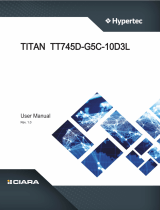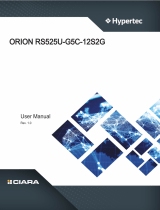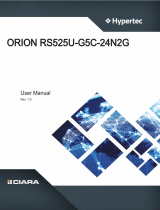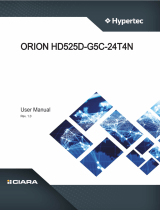
- 8 -
Chapter 5 BIOS Setup ..................................................................................................57
5-1 The Main Menu .............................................................................................. 59
5-2 Advanced Menu ............................................................................................. 61
5-2-1 Trusted Computing .................................................................................................63
5-2-2 PSP Firmware Versions ..........................................................................................64
5-2-3 Legacy Video Select ...............................................................................................65
5-2-4 AST2500 Super IO Conguration ...........................................................................66
5-2-5 S5 RTC Wake Settings ...........................................................................................69
5-2-6 Serial Port Console Redirection .............................................................................70
5-2-7 CPU Conguration ..................................................................................................74
5-2-8 AMI Graphic Output Protocol Policy .......................................................................75
5-2-9 PCI Subsystem Settings .........................................................................................76
5-2-10 USB Conguration ..................................................................................................78
5-2-11 NVMe Conguration ...............................................................................................80
5-2-12 SATA Conguration.................................................................................................81
5-2-13 UEFI Conguration .................................................................................................82
5-2-14 Tls Auth Conguration ............................................................................................83
5-2-15 Network Stack Conguration ..................................................................................84
5-2-16 AMD Mem Conguration Status .............................................................................85
5-2-17 iSCSI Conguration ................................................................................................86
5-2-18 Intel(R) I350 Gigabit Network Connection ..............................................................87
5-2-19 VLAN Conguration ................................................................................................89
5-2-20 MAC IPv4 Network Conguration ...........................................................................91
5-2-21 MAC IPv6 Network Conguration ...........................................................................92
5-3 AMD CBS Menu ............................................................................................. 94
5-3-1 CPU Common Options ...........................................................................................95
5-3-2 DF Common Options ............................................................................................100
5-3-3 UMC Common Options ........................................................................................105
5-3-4 NBIO Common Options ........................................................................................ 118
5-3-5 FCH Common Options .........................................................................................124
5-3-6 NTB Common Options .........................................................................................127
5-3-7 SOC Miscellaneous Control .................................................................................128
5-4 AMD PBS Menu ........................................................................................... 129
5-4-1 RAS ......................................................................................................................130
5-5 Chipset Setup Menu ..................................................................................... 132
5-5-1 North Bridge .........................................................................................................133
5-6 Server Management Menu ........................................................................... 134
5-6-1 System Event Log ................................................................................................136
5-6-2 View FRU Information ..........................................................................................137
5-6-3 BMC Network Conguration .................................................................................138
5-6-4 IPv6 BMC Network Conguration .........................................................................139
























